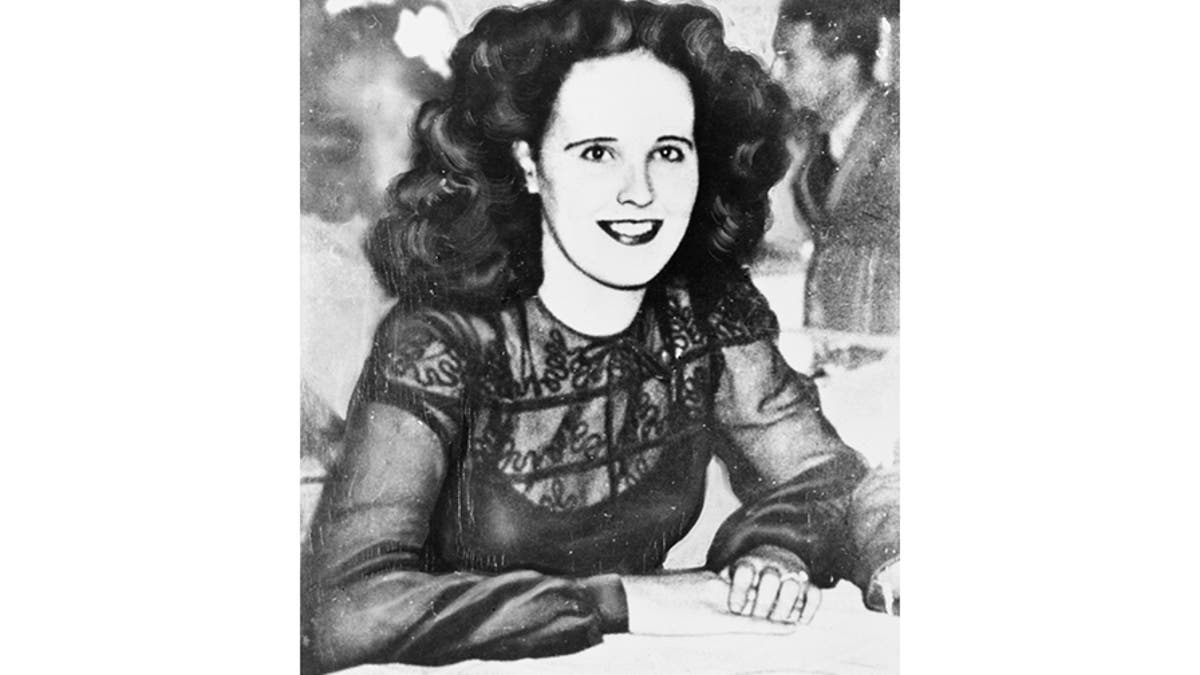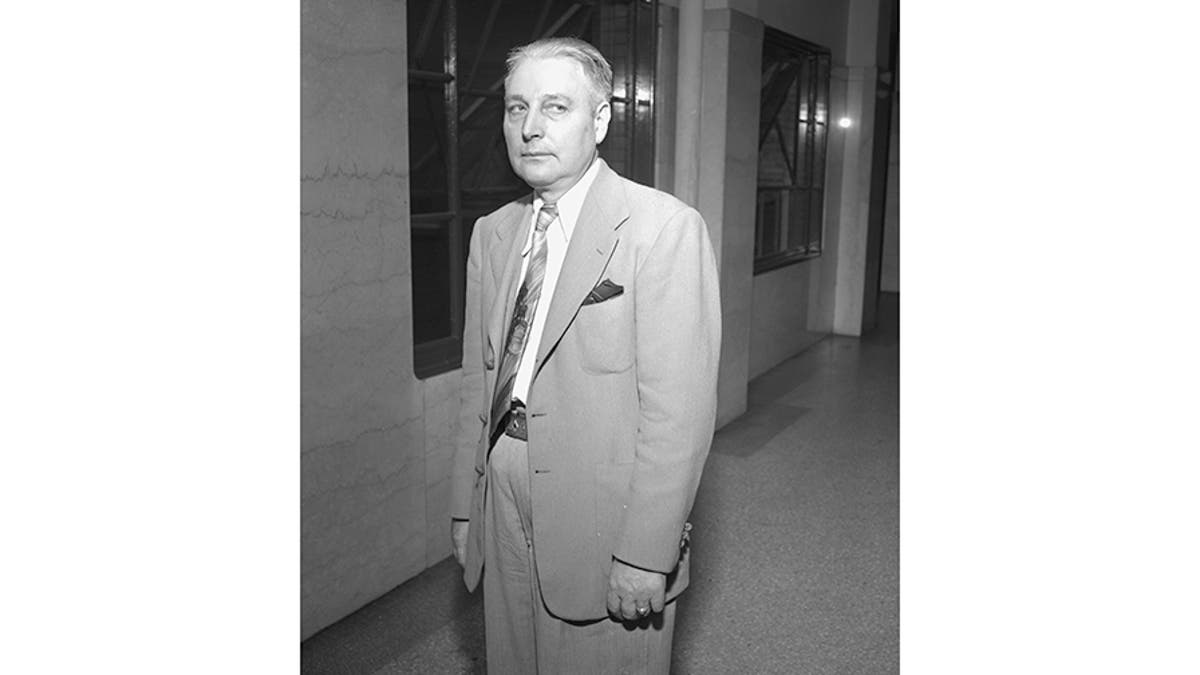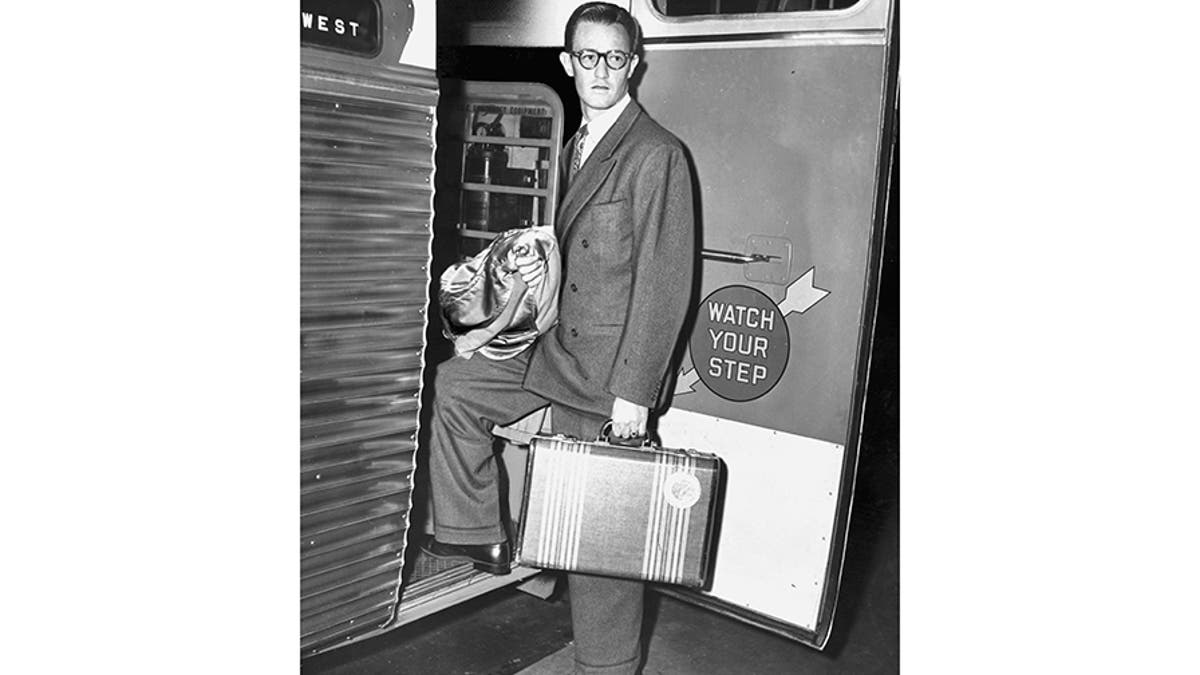Potential break in the 'Black Dahlia' case
Fox411: Author Piu Eatwell claims that new shocking details may help solve America's most grisly murder, nicknamed 'The Black Dahlia.'
When Elizabeth Short showed up in Los Angeles during the 1940s, the small-town girl had big dreams of becoming a movie star. However, she would only achieve fame in death.
The 22-year-old’s naked corpse was found in a vacant lot on January 15, 1947. Short was scrubbed, cut in half and drained of blood.
The New England hopeful was viciously mutilated and a joker’s smile was carved on her face. Short would be nicknamed “The Black Dahlia” by the press after a 1946 film noir and her killing would spark all sorts of stories and theories that continue to frighten people decades later.
Short's death became the subject of a 2006 film directed by Brian De Palma, starring Scarlett Johansson and Hilary Swank. It also inspired FX series "American Horror Story" in 2011, with Mena Suvari playing Short.
Now, a British lawyer determined to find out how a young girl from Medford, Mass. got caught up in the dark side of Hollywood, believes she may have solved the mystery of Hollywood’s most infamous murder.

Elizabeth Short, the black-haired Hollywood hopeful from Massachusetts whose murder became one of the most notorious unsolved cases in American history. (USC Los Angeles Examiner archive, Courtesy of University of Southern California, on behalf of the USC Libraries Special Collections)
MANSON'S YOUNGEST FOLLOWER TELLS ALL
In her new book “Black Dahlia, Red Rose,” Piu Eatwell attempts to shed light on Short’s brutal demise based on legal documents from the case, letters and grand jury testimony. Eatwell even tracked down some of the last living people with direct knowledge of the events at the time, and came up with a theory:
An ex-boyfriend, who was a former mortician's assistant, did it.
She was dependent on friends, boyfriends, people she got picked up by for a meal or just a place for the night
In an interview with Fox News, Eatwell said her theory was confirmed by the son of a now-deceased Los Angeles policeman who was involved in the investigation.
The alleged murderer, Leslie Dillon, entered Short's life by way of her landlord Mark Hansen, a shady Hollywood mogul-type who seemed obsessed with the young beauty.

Mark Hansen, the elusive Hollywood nightclub and movie theater owner and prime suspect for the murder of Elizabeth Short. (Los Angeles Times Photographic Archives [Collection 1429]. UCLA Library Special Collections, Charles E. Young Research Library, UCLA)
Eatwell claimed that like many girls seeking their big break, Short was lured by the wealthy businessman, who promised a bright future ahead.
“He owned a number of movie theaters in Hollywood and he was a multimillionaire," Eatwell said. "He also had a number of rooming houses and his own apartment just off Hollywood Boulevard … He was separated from his wife, who had a house on the Hollywood Hills with their two daughters.
"He had a great lifestyle in his apartment… where he would invite girls if he liked their looks… he would invite them to stay with obviously a promise that they were going to make it big as movie stars. Sooner or later, they would probably be booted out or end up as dancers in one of his nightclubs.”
NATALEE HOLLOWAY'S FATHER SPEAKS OUT
Eatwell claimed Short was one of many girls who resided in his apartment. However, Hansen allegedly became possessive of his latest discovery.

Ann Toth, Hollywood bit-part player and close friend of Elizabeth, besieged by photographers. (Los Angeles Times Photographic Archives [Collection 1429]. UCLA Library Special Collections, Charles E. Young Research Library, UCLA)
“He was known to be very, very jealous of her boyfriends,” said Eatwell. “In fact, if her boyfriends came to see her, they would drop her off a block away and they would leave because he didn’t like to see her with other men… She was [also] asking him for money… My theory is that he became tired of her and basically [told his entourage], ‘Look, somebody get rid of this girl.'"
Eatwell claimed that legal documents revealed one of Short’s female confidants confirmed Hansen became enraged by Short’s behavior.
There was definitely a cover-up. Even as I was going through the documents, pages were just missing and removed
“These girls thought [Hansen] had connections, so obviously, they felt under pressure because they thought this was their chance to make it,” said Eatwell. “[Elizabeth] had a hand-to-mouth existence. She never really had a definite job… She was dependent on friends, boyfriends, people she got picked up by for a meal or just a place for the night.”
And Short’s final days were anything but glamorous. The Los Angeles Times previously reported Short’s teeth were so badly decayed they were plugged with wax. Hansen later said in 1971, “She just asked for trouble. She probably went too far this time, and just set some guy off into a blind, berserk rage.”
Eatwell claimed that Leslie Dillon, who worked for Hanson and had allegedly served as a mortician’s assistant, was Short’s murderer. Her theory was initially explored by chief police psychiatrist Dr. J Paul De River.

Leslie Dillon ascends an ominously worded bus on his release, threatening to sue the city authorities for false imprisonment in “at least six figures.” (USC Los Angeles Examiner archive, Courtesy of University of Southern California, on behalf of the USC Libraries Special Collections)
“I’m 99 percent confident on the basis of the evidence I see,” said Eatwell. “There was definitely a cover-up. Even as I was going through the documents, pages were just missing and removed. And they’re almost always connected somehow to Leslie Dillon or Mark Hansen.
SON OF SAM SURVIVOR DETAILS NEAR-DEATH EXPERIENCE
[Everything] fits together into this picture of someone who has a huge inferiority complex… a physical hatred of women
"There are very serious questions about Leslie Dillon that can’t be answered… Her shoes and purse were found dumped in the trash can shortly after the murder by a local cafe owner. And that’s actually two blocks from where Leslie Dillon lived… The park where she was found is one he knew very well and in fact, used as a shortcut to get to where he lived.”
She went on to insist Dillon, an aspiring writer, allegedly preserved newspaper clippings about violence against women. Short’s friend Ann Toth and model Ardis Green reportedly identified Dillon as one of her boyfriends.
Eatwell added, “If you look at the examples of Dillon’s so-called creative writing… [his] insecurity is reflected in those… [Everything] fits together into this picture of someone who has a huge inferiority complex… a physical hatred of women.

Det. Sgt. Bill Cummings inspects the contents of Elizabeth’s suitcase and hatbox, checked into the Greyhound bus station when she was with Robert “Red” Manley. (Los Angeles Times Photographic Archives [Collection 1429]. UCLA Library Special Collections, Charles E. Young Research Library, UCLA))
"Mark Hansen was very discreet about his private life… [Hansen] was also known to have connections with one of the lead homicide officers on the Dahlia case. And if you go through the grand jury case, it’s obvious the grand jury is very, very suspicious and they’re not happy with the evidence [Hansen] gives at all.”
Newspaper clippings obtained by the FBI revealed Dillon was held as “suspect number one” after he contacted De River, offering “to help with a book on sadism” due to his interest in “psychopathic cases, such as the unsolved ‘Black Dahlia’ murder.”
Police said at the time the then-27-year-old knew "minute details of the slaying of Elizabeth Short, but denies killing or even knowing her.” In another clipping, police said Leslie Dillon “was familiar with details of the unsolved slaying that never were made public.”
The Los Angeles Times reported in 1949 that Dillon was released by police due to lack of evidence. He would go on to live a relatively quiet life until his death in 1988 at age 67. As for Hansen, Eatwell claimed he remained on the police suspect list for the rest of his life, but was never charged. He died at age 74 in 1964.
Short’s murder remains unsolved.
“There were many of these girls [like Elizabeth] in Hollywood,” she said. “Showing up in buses from all over the country, hoping to become movie stars and falling in with the wrong people.”


























